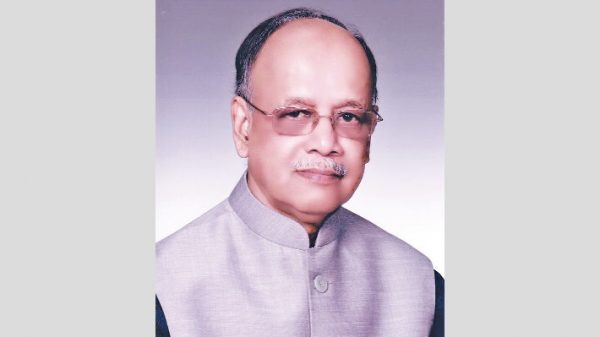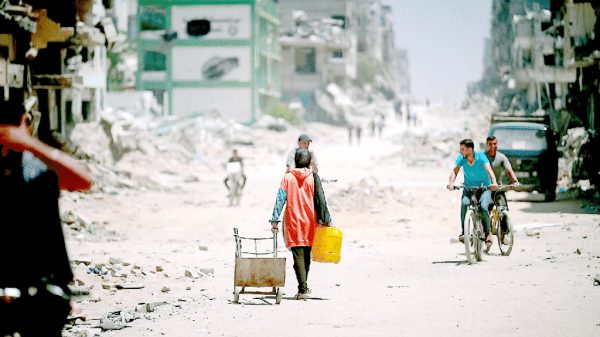Truth Is Stranger than Fiction

Abdul Mannan:
“Truth is stranger than fiction, but it is because Fiction is obliged to stick to possibilities; Truth isn’t” wrote the great American writer Mark Twain. In recent days the international media appraising the economic conditions of countries around the world during the Covid-19 pandemic time profusely praised the achievements of Bangladesh under the statesman like leadership of its Prime Minister Sheikh Hasina which to some critics both in Bangladesh and our neighbouring country India aren’t often well taken or to some even not understood.
On 2nd June Indian politician, writer and former international diplomat who has been serving as Member of Indian Parliament (Lok Sabha) sine 2009 and currently recovering from Covid-19 pandemic himself Shashi Tharoor, twitted and came down heavily on Indian government because of its massive failure in facing the pandemic time crisis. He was also critical of Indian government’s inability to anticipate the problem and privatization of vaccination programme where private hospitals charge a fee for vaccinating whereas Bangladesh’s Prime Minister has made arrangements for distribution of the vaccines free to all those who are eligible. India which is world’s largest manufacturer of vaccines have miserably failed to vaccinate its people and in many states the vaccination programme has collapsed because of non-availability of the vaccine or people’s apathy about the pandemic and vaccine. Political parties and civil society members across India are highly critical on the government’s for this failure.
On economic fronts Bangladesh has outperformed many of its neighbours, including India during this pandemic time. On April 6th the International Monetary Fund has raised its projection for the economic growth of Bangladesh to 5 per cent for 2021, up from 4.4 per cent it forecast in last October. The Washington based multilateral lender came up with the projection in the World Economic Outlook, which was published on the same day. According to the IMF, the country will return to its high growth trajectory next year, when the GDP is expected to expand by 7.5 per cent. These are just projections and the figures may change either way depending on future circumstances. Currently Bangladesh has been identified by most international bodies and agencies that it is one of the five fastest growing countries in the world with a projected growth rate of 5 per cent during this fiscal year (2020-21) while that of India, according to Government of India data will witness a contraction of 7.3 per cent for the same period. This is the first highest full-year contraction in the Indian economy in the last four decades since 1979-80, when GDP had shrunk by 5.2 per cent.
Earlier on October 14th 2020 Business Today published from India wrote Bangladeshis will soon be richer than Indians. The projection was based on per capita GDP of both countries though still the PPP (Purchasing Power Parity) is stronger in India than in Bangladesh. Business Today wrote “the data is worrisome for two reasons. First, it shows that India is slipping below Bangladesh in 2020 per capita GDP due to the double digit contraction of in India’s economy (-10.3 in GDP as against 3.8 per cent GDP growth of Bangladesh), indicating severe hit India has taken due to Covid-19, unlike its neighbour. Second, even after five years, India’s economic growth is unlikely to catch up with the pace of Bangladesh, which means the continuation of the troubles in the near future too.”
On June 2nd 2021 the Economic Times also published from India carried a news report authored by Mihir Sharma (Mihir Swarup Sharma) and published by Bloomberg (US based media company deals with economic data from across the world and uses them to create analytical reviews) titled “South Asia Should Pay Attention to its Standout Star.” Mihir Sharma (a senior fellow at the Observer Research Foundation in New Delhi and head of its Growth Programme) wrote “Half a century ago, in March 1971, Bangladesh’s founders declared their independence from richer and more powerful Pakistan. The country was born amid famine and war; millions fled to India or were killed by Pakistani soldiers. To the Pakistani military’s American backers, the new country seemed destined to fail; Henry Kissinger, the Secretary of State (of Richard Nixon), famously called (Bangladesh) a ’basket case.’ …This month, Bangladesh’s Cabinet Secretary told that GDP per capita had grown by 9 per cent over the past year, rising to US$ 2,227. Pakistan per capita income, meanwhile, is US$1,543. In 1971, Pakistan was 70 per cent richer than Bangladesh; today, Bangladesh is 45 per cent richer than Pakistan. One Pakistani economist (Abid Hasan, formerly with the WB) glumly pointed out that ‘it is the realm of possibility that we could be seeking aid from Bangladesh in 2030’. ”
Mihir Sharma writes “India – eternally confident about being the only South Asian economy that matters – now must grapple with the fact that it, too, is poorer than Bangladesh in per capita terms. India’s per capita income in 2020-21 was US$ 1,947.” Sharma continues and says “don’t hold your breath expecting India to acknowledge Bangladesh’s success: Right-wing figures in India are convinced Bangladesh is so destitute that illegal immigrants from there are overrunning the border. In reality, Bangladesh is far richer than the depressed Indian states where Hindu nationalist politicians have been railing against Bangladeshi ‘termites’ (Indian Home Minister Amid Shah.) … Perhaps that explains why Indian media exploded with indignation and denial when the GDP numbers were announced. Meanwhile Bangladeshi media have made little of the comparison. That’s the sort of self-confidence that comes from growing consistently. Bangladesh’s growth rests on three pillars: exports, social progress and fiscal prudence. Between 2011 and 2019, Bangladesh’s exports grew at 8.6 per cent every year, compared to the world average of 0.4 per cent. The success is largely due to the country’s relentless focus on products, such as apparels, in which it possesses a comparative advantage.”
On 26th March 2021 German based DW (Deutsche Welle) media company (also carried by Taiwan News, Foreign Policy and few other international media) titled a feature on Bangladesh as “Bangladesh at 50: From ‘basket case’ to rising economic star.” It briefly traced the history of rise of Bangladesh from the ashes of war in 1971, interrupted by military rule and pseudo military rule of Zia and Ershad. The report said, “Before the onset of coronavirus pandemic, the economy was growing rapidly, recording an annual expansion in the range of 8 per cent for years. The Asian Development Bank said that despite the hit from the pandemic the Bangladesh economy is recovering fast. …Muslim-majority nation (Bangladesh) over the years has invested heavily in the lives of women and girls. It has also made progress in combating child malnutrition and reproductive health. …Currently, 98 per cent of children nationwide have finished primary school, with more girls in secondary school than boys.” However, these are pre-pandemic scenario. Many of the gains in different sectors may be lost due to the pandemic. However, in many cases pro-active measures are being taken for making up the lost ground, thanks to the forward looking Prime Minister Sheikh Hasina who believes in pre-emptive actions.
On 3rd June 2021 Finance Minister A H M Mustafa Kamal MP presented the 50th national budget for the financial year 2021-2022 with an outlay of Taka 603,681 crore which is 6.28 per cent higher than the current fiscal year and it is about 17.4 per cent of GDP and around 12 per cent higher than the revised budget of the current fiscal year while 6.34 per cent higher than the main budget. He also announced that Bangladesh’s GDP growth rate stands at 5.2 per cent, highest in Asia and expects it will be 7.2 per cent during the fiscal year 2021-22. In next few days economists and experts will discuss on the proposed budget but what is remarkable is Bangladesh’s constant positive growth rate even in this difficult time. It was made possible by our agriculture, readymade garments, service sector and small and medium scale industries. This remarkable achievement was made possible by the resilience nature of people of Bangladesh. When the success stories of Bangladesh were published in many international media including those in India, quite a few annoying comments appeared in the social media where the commentators found all these figures to be exaggerated and fake. One commentator even commented that those who make such comments have no idea about economics and another one asked if the condition in Bangladesh is what the commentators say then why India harbours so many illegal immigrants from Bangladesh. The ignorance of these commentators is sky high. There are no illegal immigrants from Bangladesh in India. Those who are termed as illegal immigrants are the victims of the unfortunate division of Bengal in 1947 and the onus of giving them the citizenship lies with the Indian government. Roughly 1.6 million visas are issued by Indian High Commission in Bangladesh every year to Bangladeshis to travels to India for healthcare, business, education, tourism, shopping or even vacationing and who spend millions of dollars in India. Those illegal immigrant about whom these ultra-right wing commentators or politicians talk about are either people who have siphoned huge amount of ill-gotten wealth to India and later migrated there to settle down or have crossed the border illegally after committing some major crimes in Bangladesh. There are also some manual workers who cross both sides of the border on a regular basis and by no standard they can be termed as illegal immigrant. They all return back to their home at regular intervals. They are all but trespassers. Such trespassing happens throughout the world between or amongst neighbouring countries. There are several hundred thousand Indians in Bangladesh who work in different sectors, both legally and illegally, and remit billions of dollars to India.
I would like to end this commentary again by quoting Mihir Sharma. He writes, “As its economy matures, its comparative advantages (competitive advantage would have been a better term) will also change. Like Vietnam and others (even China), it will have to shift emphasis away from garments to higher-value exports. The transition will test Bangladesh as it has those other nations. The government needs a strategy for the next decade that focuses on new forms of global integration and on a continued transformation of the economy. The smartest thing to do would be to retain access to the developed world’s markets by signing free-trade agreements. Work has started on a FTA with the ASEAN nations according to Bangladeshi officials, but there’s a lot more to be done”. The much hyped talked about SAARC or SAFTA are virtually dead.
Those who forecasted a grim future for Bangladesh fifty years back will find it difficult to acknowledge the long arduous journey of Bangladesh but sometimes ‘truth is stranger than fiction.’ A prosperous neighbour is beneficial for India in many respects.




























Leave a Reply